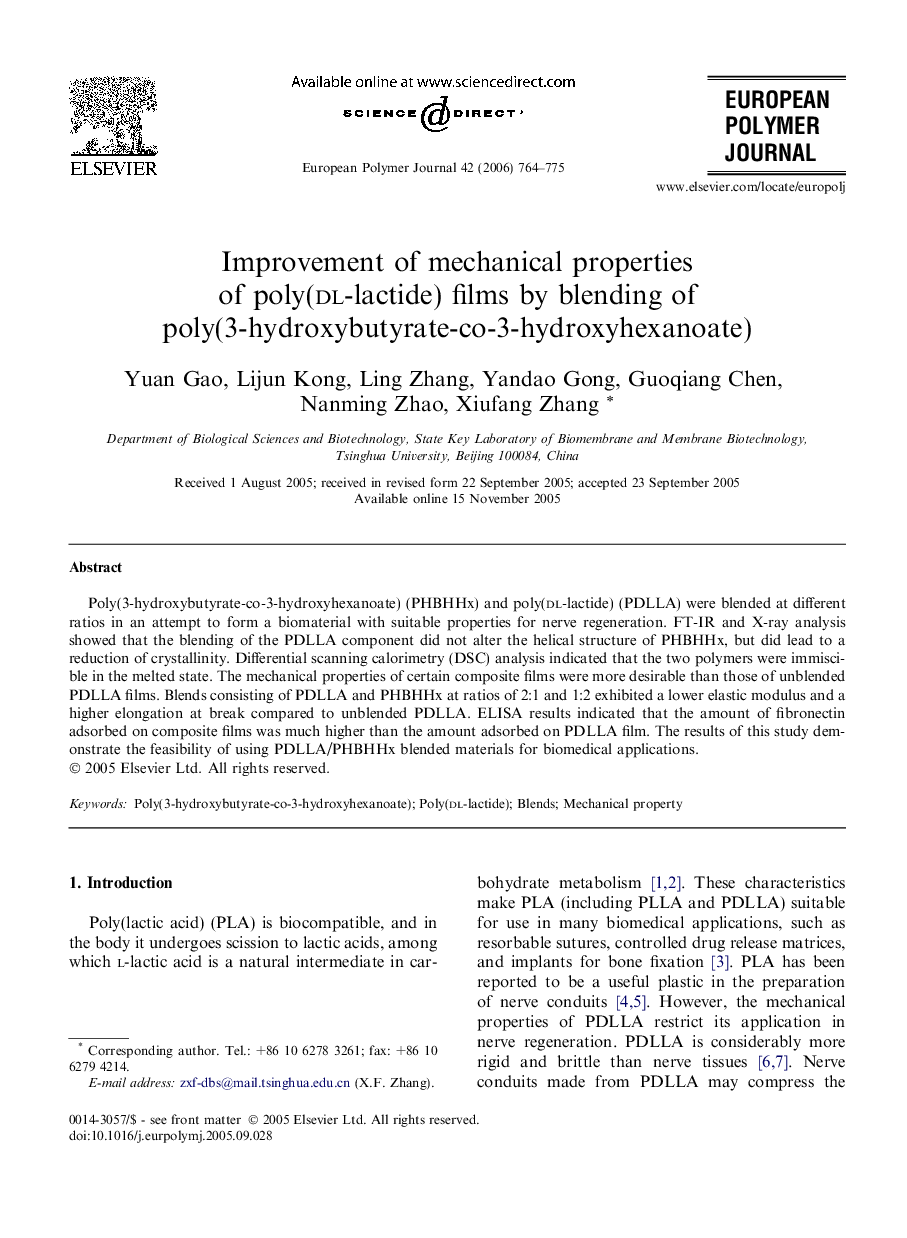| Article ID | Journal | Published Year | Pages | File Type |
|---|---|---|---|---|
| 1403946 | European Polymer Journal | 2006 | 12 Pages |
Poly(3-hydroxybutyrate-co-3-hydroxyhexanoate) (PHBHHx) and poly(dl-lactide) (PDLLA) were blended at different ratios in an attempt to form a biomaterial with suitable properties for nerve regeneration. FT-IR and X-ray analysis showed that the blending of the PDLLA component did not alter the helical structure of PHBHHx, but did lead to a reduction of crystallinity. Differential scanning calorimetry (DSC) analysis indicated that the two polymers were immiscible in the melted state. The mechanical properties of certain composite films were more desirable than those of unblended PDLLA films. Blends consisting of PDLLA and PHBHHx at ratios of 2:1 and 1:2 exhibited a lower elastic modulus and a higher elongation at break compared to unblended PDLLA. ELISA results indicated that the amount of fibronectin adsorbed on composite films was much higher than the amount adsorbed on PDLLA film. The results of this study demonstrate the feasibility of using PDLLA/PHBHHx blended materials for biomedical applications.
